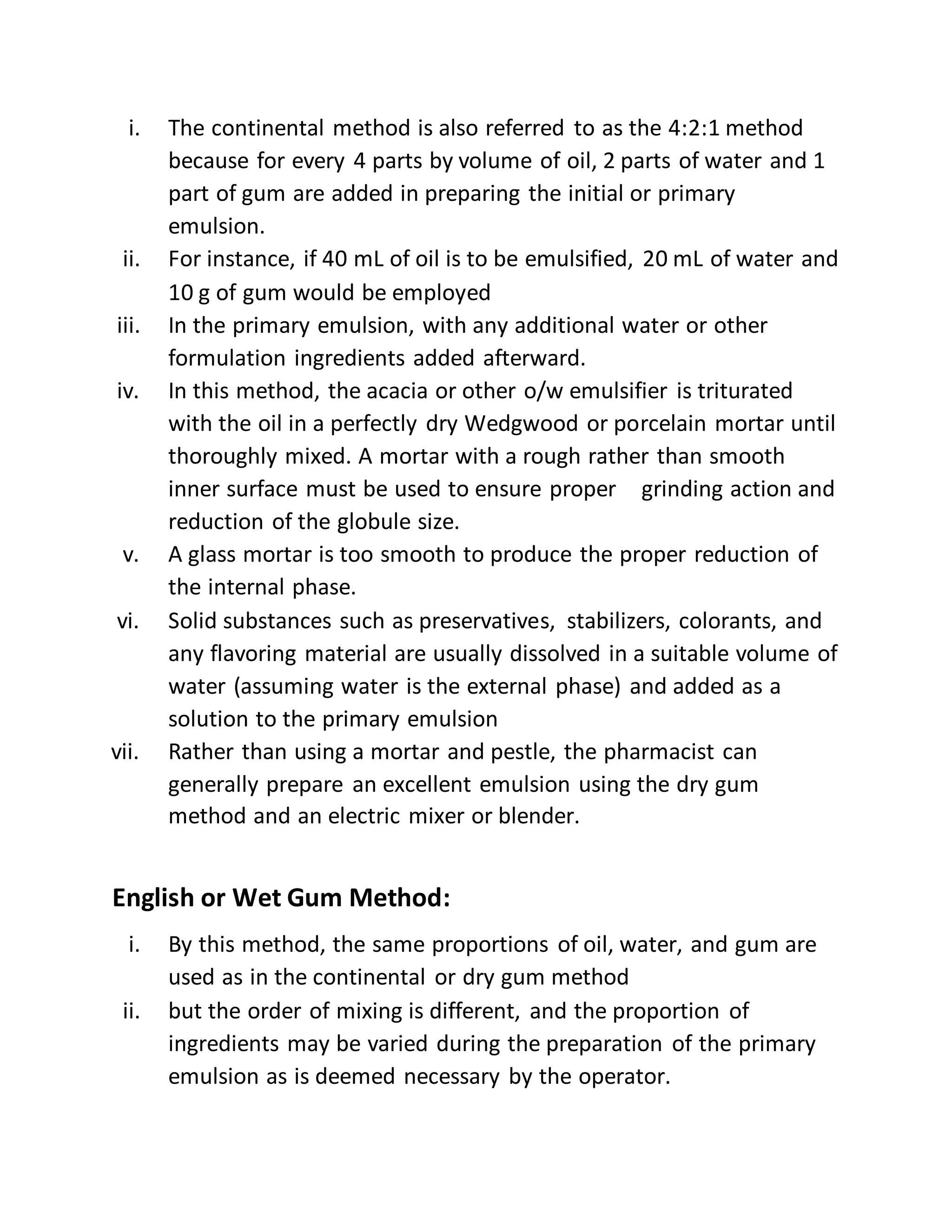This document discusses various methods for preparing dispersed systems like emulsions, suspensions, and colloids. It describes three common methods for making emulsions: the continental/dry gum method, English/wet gum method, and bottle/Forbes bottle method. Suspensions can be prepared using dispersion or precipitation methods. Dispersion involves breaking down large particles into colloidal sizes using surfactants, while precipitation involves changing pH, solvents, or double decomposition. Colloids are prepared using aggregation methods like double decomposition, oxidation, reduction, or hydrolysis, or dispersion methods like mechanical grinding, Bredig's arc method, or peptization.








